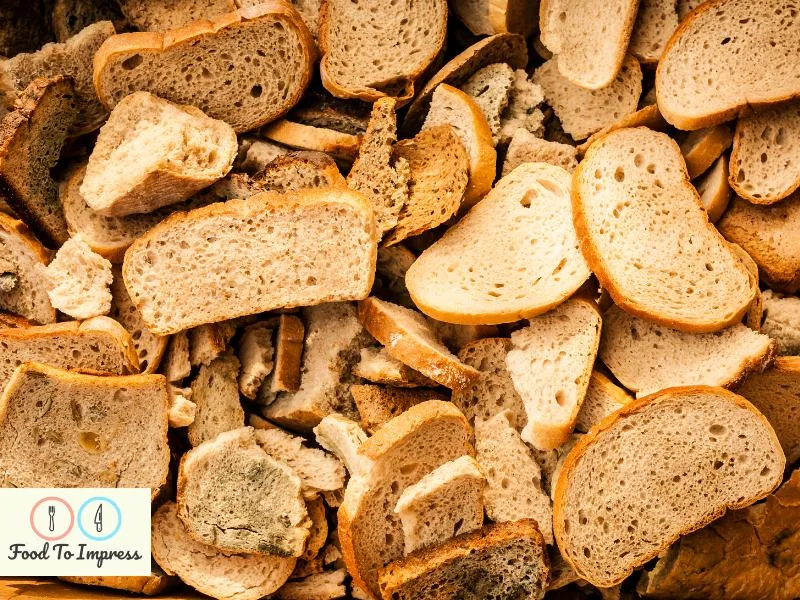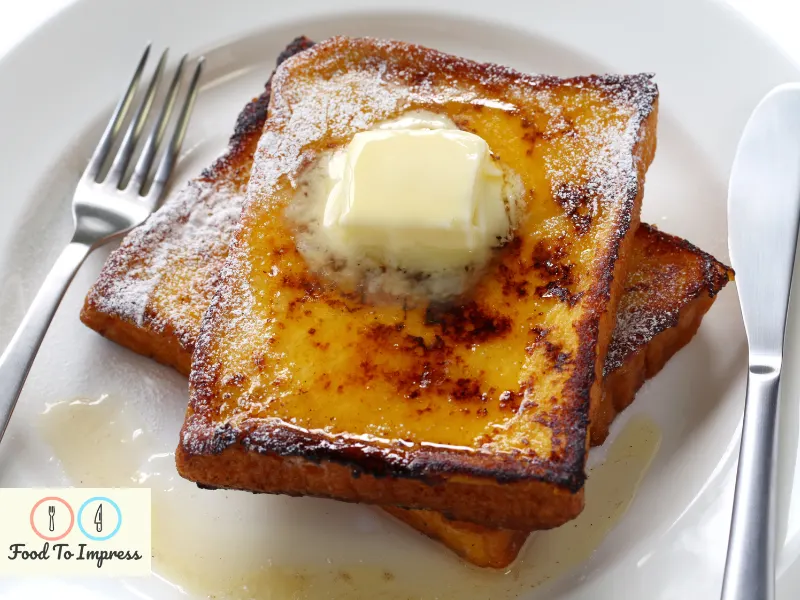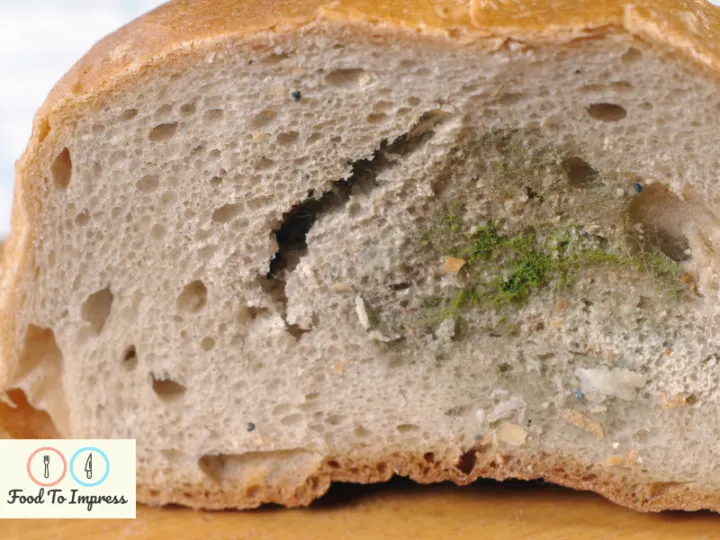We’ve all been there. You’re about to make a sandwich, and you go to grab a slice of bread, only to find that it’s gone stale. Is stale bread safe to eat? What are the consequences? Here’s everything you need to know about eating stale bread.
Very stale or moldy bread is unsafe to eat and should be discarded immediately. If you want to extend the life of your store-bought or homemade bread, be sure to store it correctly and check for signs of spoilage before consumption. Learn creative ways to use your stale bread! Read on for more details.
How Long Does Bread Last?
Wondering how long bread lasts? Generally speaking, if kept at room temperature, the shelf life of bread is about 7 days for store-bought bread and 3-4 days for homemade bread. After that different types of bread may get stale or moldy.
To best way to preserve the freshness of your bread, wrap it in aluminium foil, place it in an airtight container, use a bread box or store in the fridge for up to one week. For best results, toast the bread before consuming to add some life back into old bread that has been sitting around for many days. Ultimately, when it comes to storage times, nothing beats eating freshly-baked bread!
Is It Dangerous to Eat Stale Bread?
Have you ever shoved a piece of stale bread in the toaster just so you won’t need to buy a new entire loaf? Well, it’s worth considering that over time, stale bread can become unsafe for consumption.
If you see mold on the bread, it can be dangerous to eat. Not only can mold spores contaminate your food, but they can also cause an allergic reaction in some people. If you spot any mold, it’s best to discard the bread immediately and buy a new loaf.
The expiration date on your crusty loaf is there for a reason, and eating past its date can mean getting exposed to bacteria and other germs that can cause food poisoning or allergic reactions.
So if you want to be safe, check the expiration date and err on the side of caution rather than wasting money – after all, no amount of money will have you feeling better if you get sick or have stomach problems from chowing down on some old bread!
Read more about How To Prevent Your Bread From Becoming Moldy
What Happens If You Eat Moldy Bread?
Eating moldy bread can be more than a little unpleasant. Aside from the icky feeling, moldy bread contains mold spores which can trigger mold growth in your digestive system when ingested.
The health effects of mold ingestion vary depending on the type of mold present, but some potential side effects could include headaches, nausea, vomiting, and diarrhea.
In extreme cases, consuming moldy food can cause respiratory issues due to the inhalation of mold spores. All in all, it’s best to avoid eating moldy bread if you don’t want to risk getting sick!
How to Tell if Bread is Bad – Is stale bread safe to eat?
You know the feeling – you’re all set for that perfect, freshly-sliced sandwich only to realize the bread you’re holding is a little too squishy or the corner of your loaf has a strange type of mold. Unfortunately, stale food can happen fast!
Luckily, some easy signs to look out for can help you detect if your bread has gone bad. The classic sign is any mold growing on it – in this case, throw away the affected parts and use what left for as soon as possible. Other indications include a sour smell, an unpleasant taste (which can range from disgusting taste to just an off smell), and even a crumbly texture that easily falls apart. With just a few helpful tips, you’ll never have to spend time double checking if your loaf is still good to eat!

Does Bread Go Bad in the Fridge?
Leftover bread can be stored in the fridge to extend its shelf life, but this doesn’t necessarily mean it will stay fresh forever. While bread stored in the fridge may last a few days longer than bread stored at room temperature, old bread is still subject to spoilage and mold.
To avoid having to waste leftover bread that has gone bad, try freezing any leftover slices after use so you can thaw and enjoy it when you’re ready!
Tips on Keeping Bread Fresh
Here are some tips on keeping store-bought or homemade bread fresh:
• Store bread in a cool, dry place away from direct sunlight
• Wrap bread tightly with plastic or aluminum foil to retain moisture and flavor.
• Place the wrapped loaf on its side rather than upright so air can circulate around it.
• If you need to store bread for longer periods of time, put it in the freezer and thaw when ready to eat. Read more about if you can refreeze bread here.
• If you made your own bread, slice it before storing so that each piece can be removed as needed.
• Try making smaller loaves if you struggle with eating the entire thing quickly.
• Always check labels for expiration dates or signs of spoilage before consuming stale bread.
• If in doubt, discard old bread and buy a fresh loaf.
By following these simple tips, you can ensure that your bread stays fresh and delicious for as long as possible!

Things to Make With Stale Bread
If your bread is not entirely stale and does not have any mold, here are a few simple ways to use your bread to prevent food waste:
• Make your own croutons by cutting the bread into cubes and baking them in the oven.
• Use slices of stale bread to make delicious French toast.
• Create a savory strata with eggs, cheese, sausage, and vegetables for a satisfying breakfast or dinner.
• Cut up pieces of old bread or use a food processor and make your own bread crumbs for a variety of dishes. This works with any type of bread.
• Use stale bread to make classic Italian panzanella salad.
• Blend up small pieces of old bread and use it as a thickener for soups or sauces.
• Bread pudding is great with stale white bread
• Make a flavorful stuffing with vegetables, herbs, and spices.
• Toast the slices and make them into crunchy garlic bread for a side dish.
• Bake your own cheesy breadsticks to enjoy with dinner.
• Dry out the slices in the oven to form your own chips or crackers.
You can turn something old into something new by getting creative with stale bread! From croutons to salads to cheesy breadsticks, there are plenty of delicious ways to use old bread and never let it go to waste.
Bottom Line – Is It Safe to Eat Stale Bread?
Stale or moldy bread is not safe to eat and should be discarded immediately. If you want to extend the life of your bread, be sure to store it correctly and check for signs of spoilage before you eat it. Finally, rather than throwing away stale bread, there are many creative ways to turn it into a tasty dish! With these tips, you can easily keep your loaves fresh for days to come.

